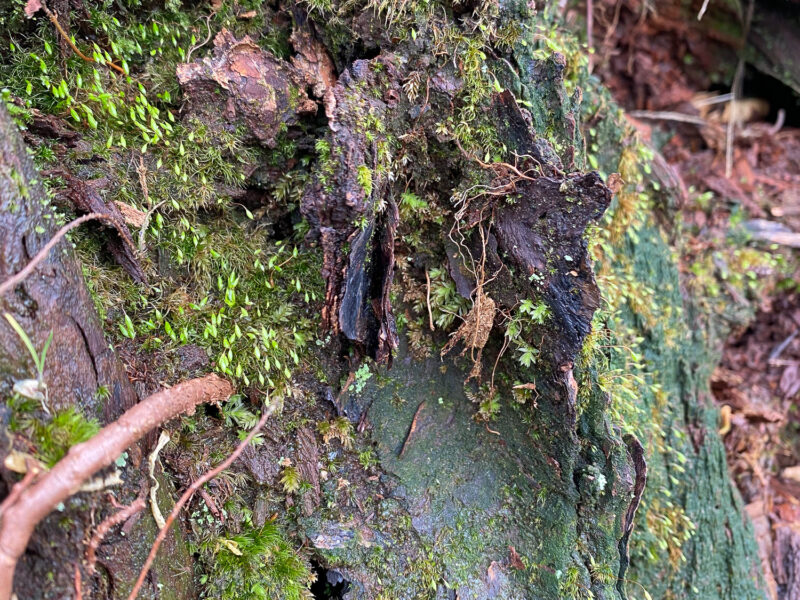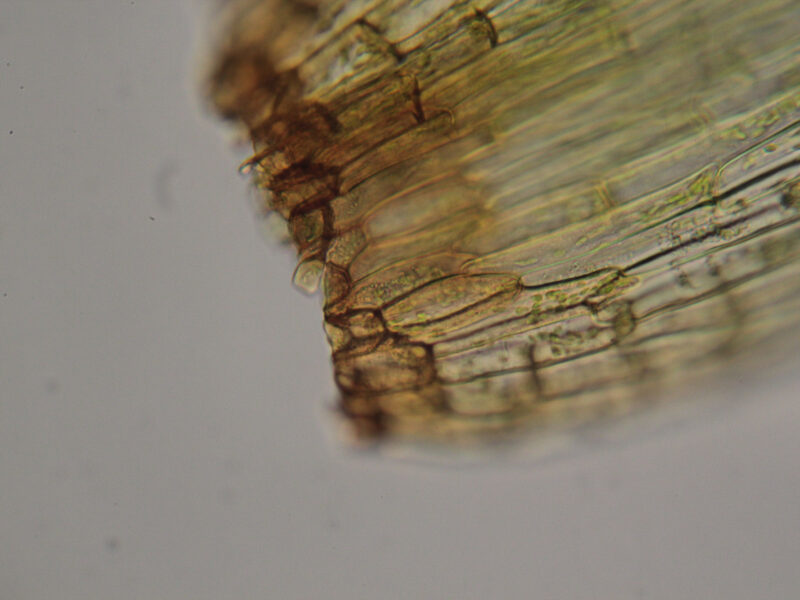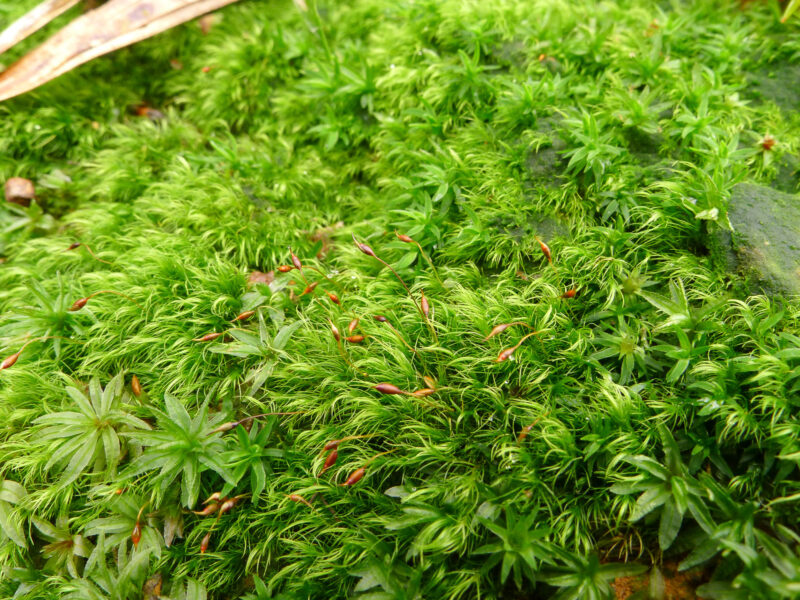Identification notes
Bryologists in the south and east of Britain will soon become familiar with this species of rotting stumps and logs in shaded woodland, usually most abundant on their vertical faces. In other parts of the country, it can be common on rocks and sandy and peaty banks too. It looks so much at home, that it is hard to believe that it is an introduced species, native to the southern hemisphere, first detected in Britain at the beginning of the twentieth century.
It commonly fruits and the massed ranks of its long, thin leaves, setae and capsules, dangling downwards from the side of a stump, look like a miniature waterfall. It is then unmistakeable. It can be more confusing when there is only a small amount of it, or if it is infertile. Then, you need to check for Dicranella heteromalla, Dicranoweisia cirrata and Campylopus flexuosus which can grow in similar places and look quite like it. Dicranella heteromalla has leaves that tend to bend over in one direction and they have a wider nerve. Dicranoweisia leaves are not quite as long and thin as those of O. lineare (practice needed here) and the capsule has key differences: that of D. cirrata has a red rim and the lid has a long beak. That of O. lineare has no red rim and the short beak of the lid is tilted noticeably to one side. C. flexuosus has a much wider nerve and obvious reddish auricles lacking in O. lineare.
Beware that its congener O. gracile looks very similar indeed and can only be reliably separated microscopically – if you find ‘O. lineare’ growing on shaded sandstone or gritsone rocks in lowland woods, take a very small amount back for checking.
Read the Field Guide account













